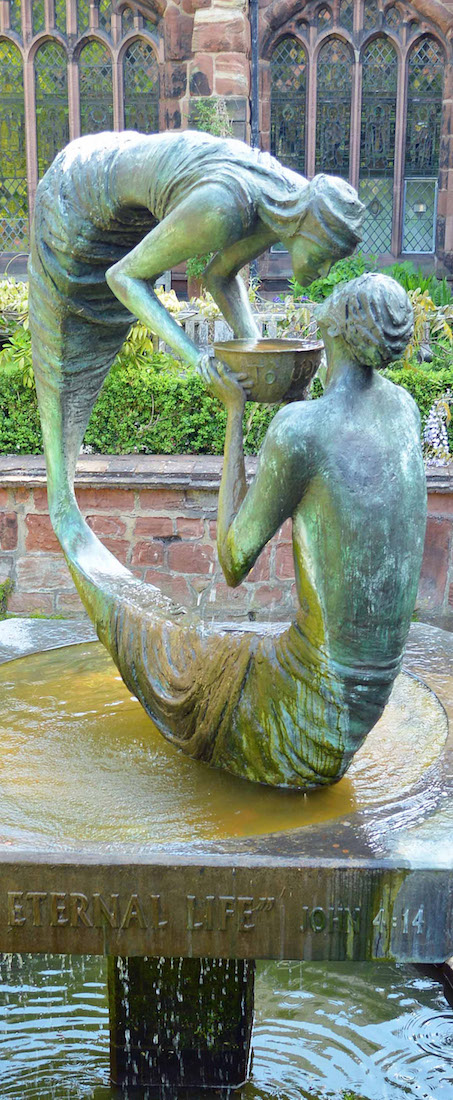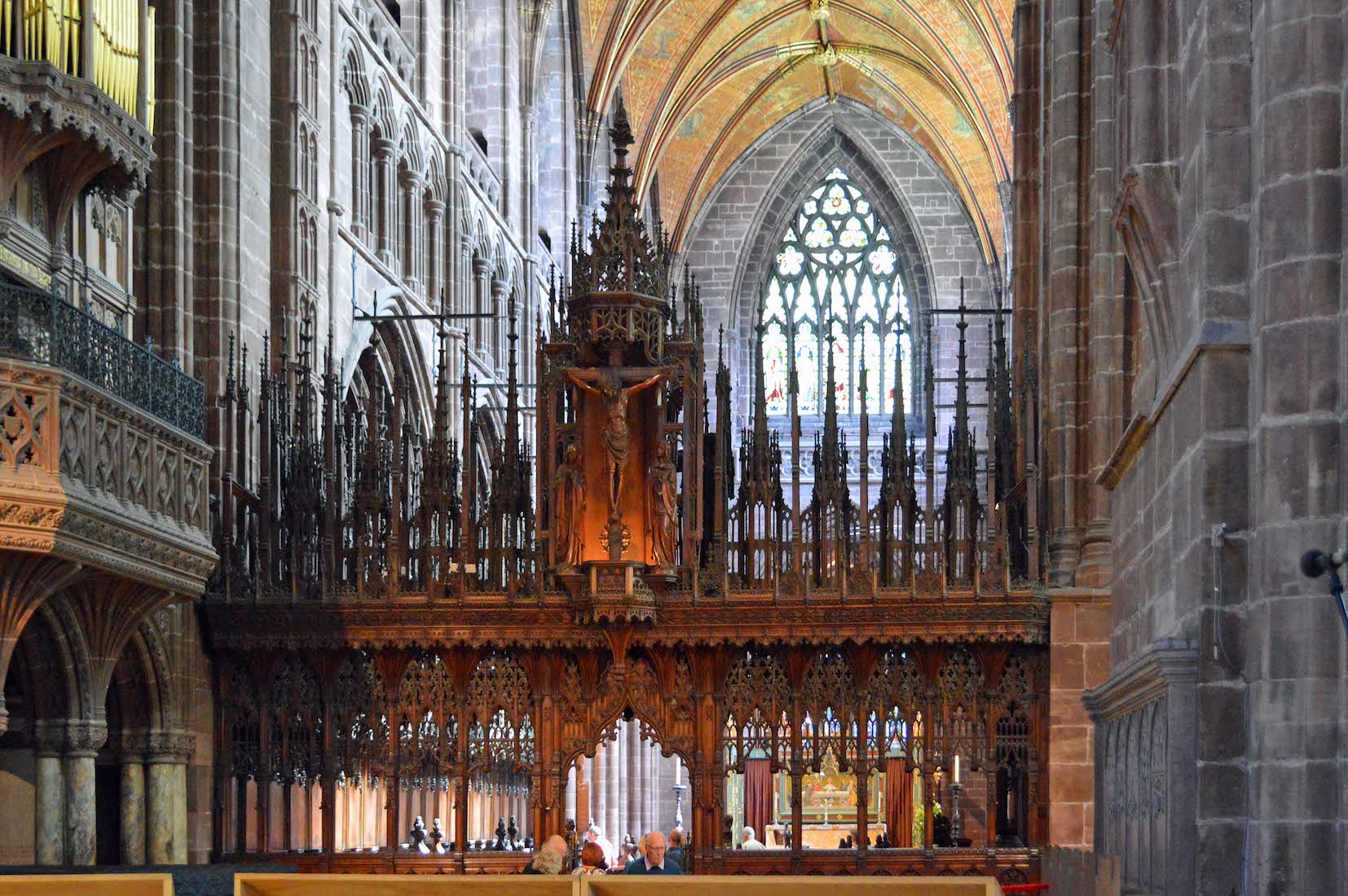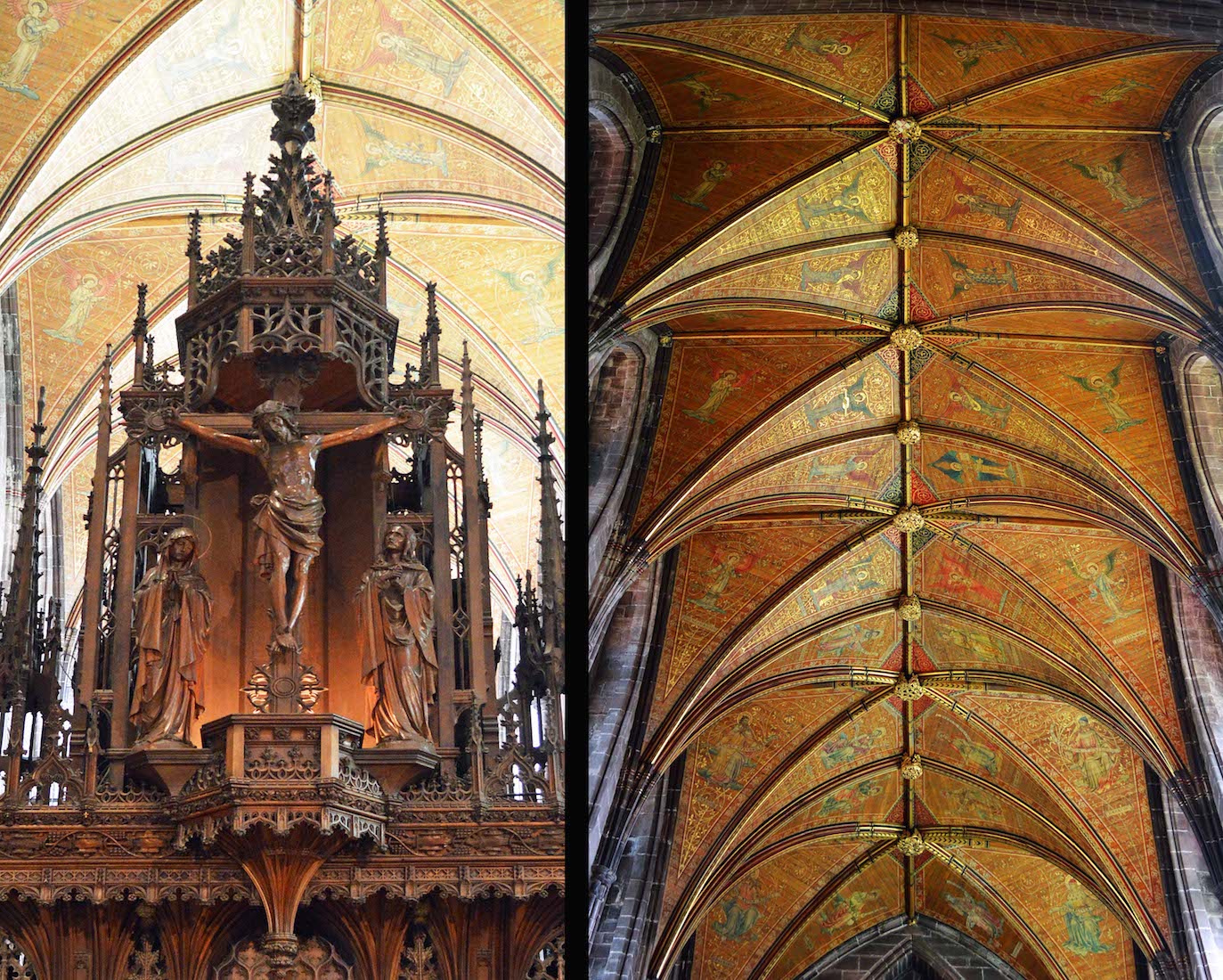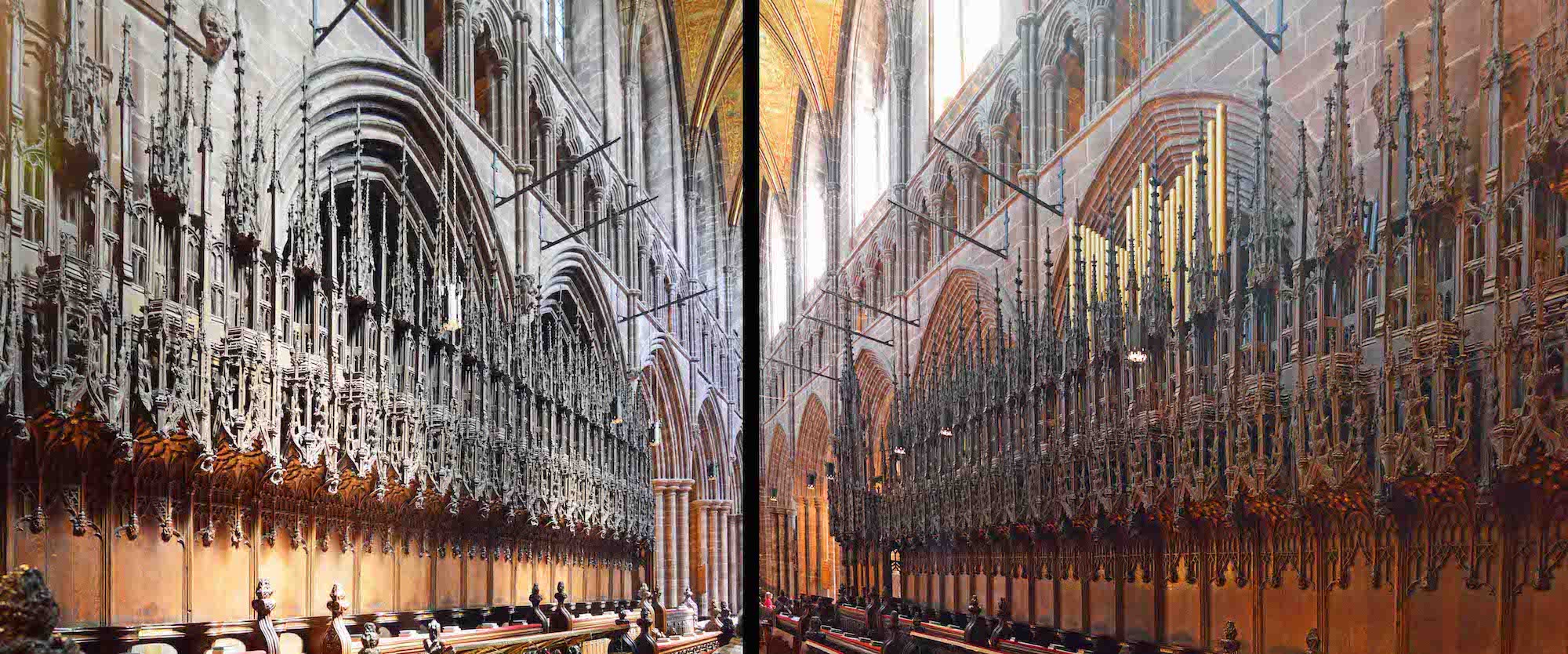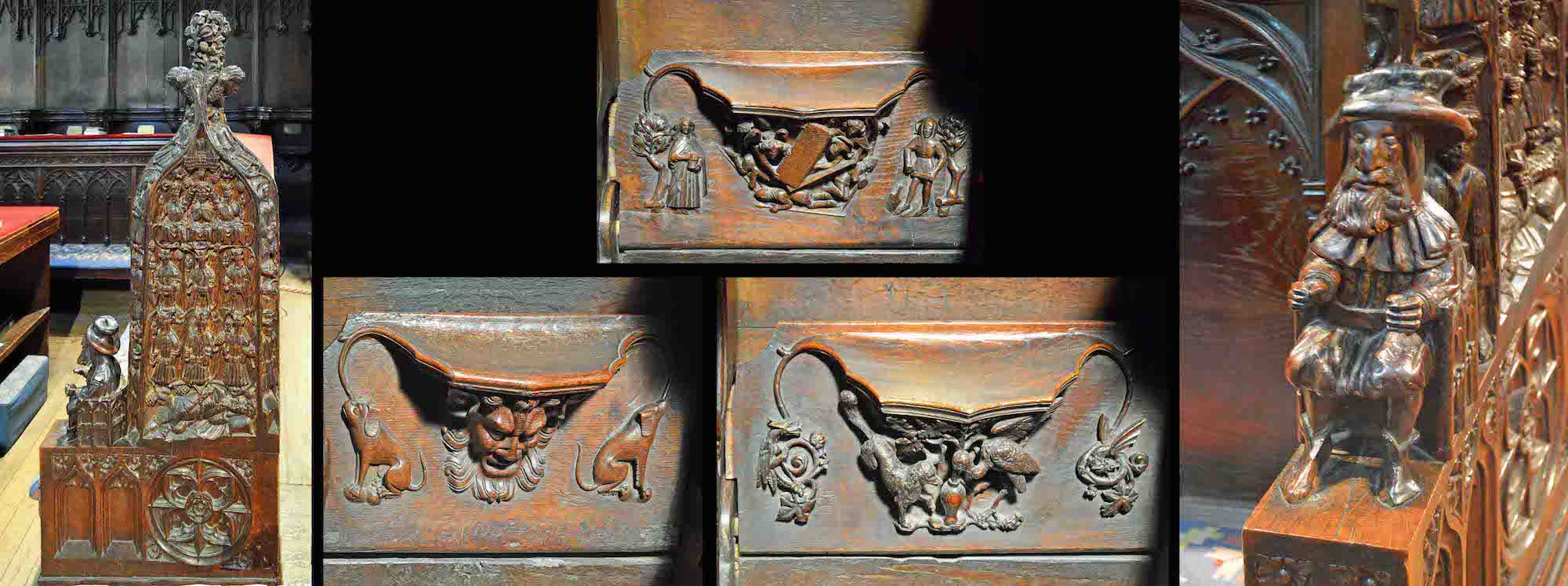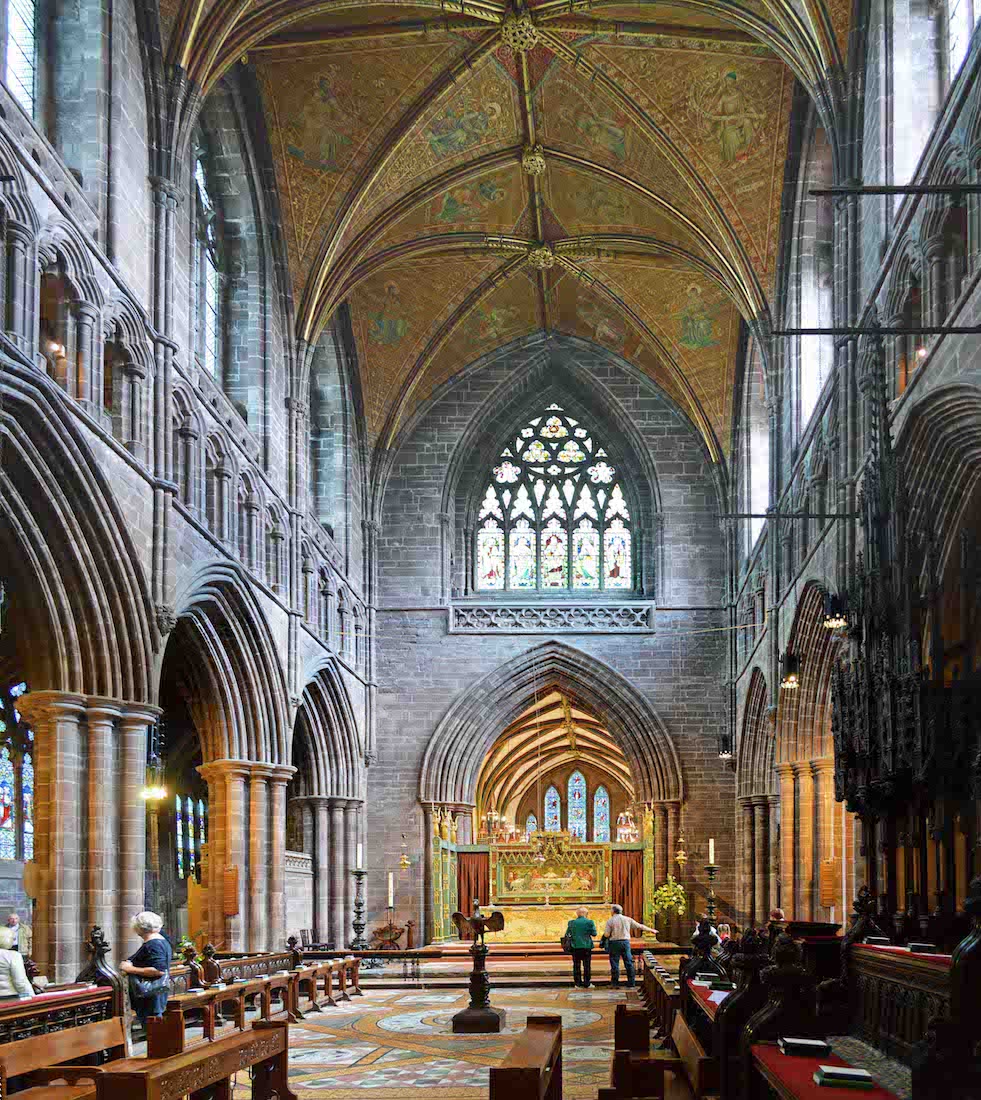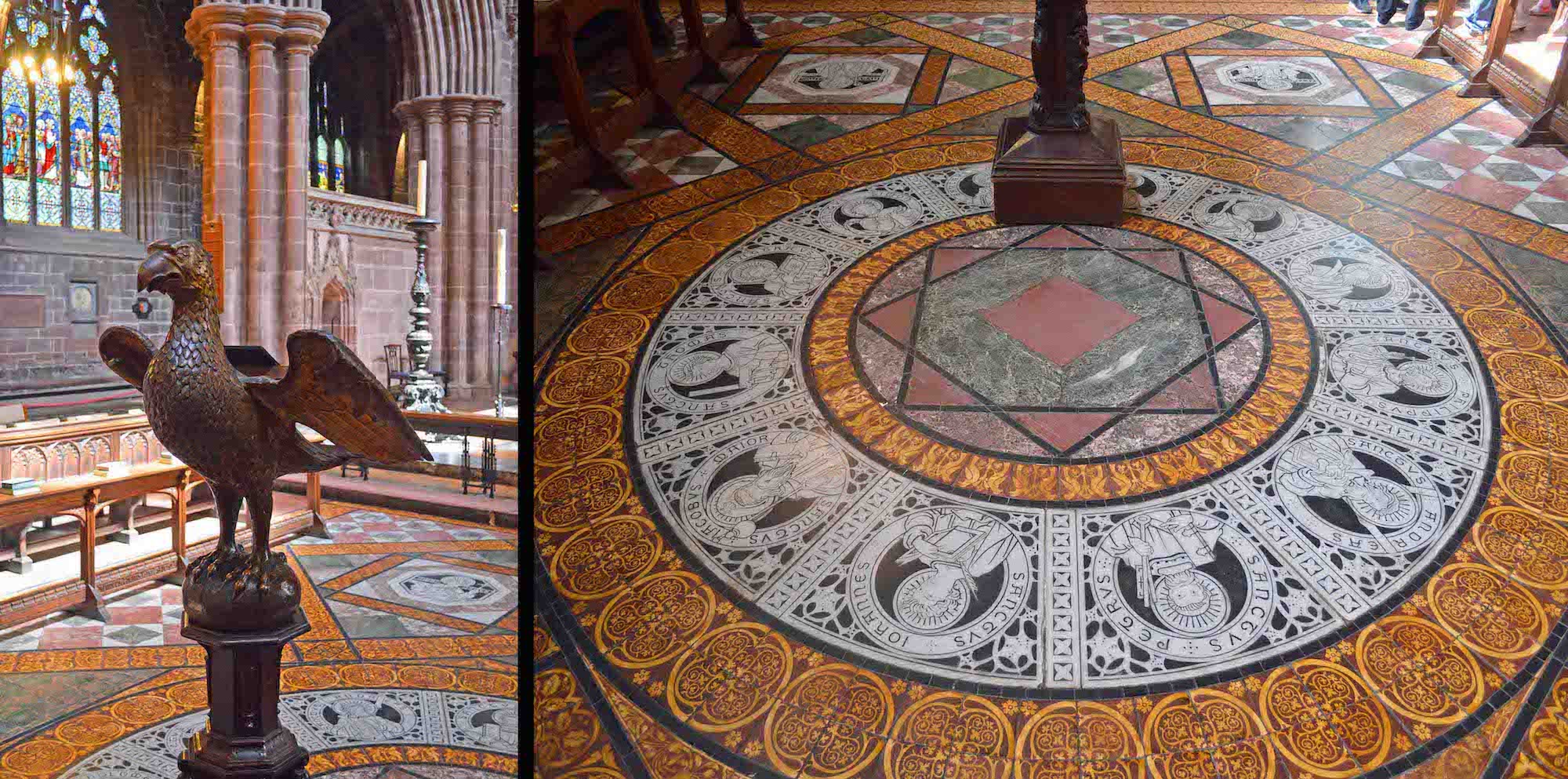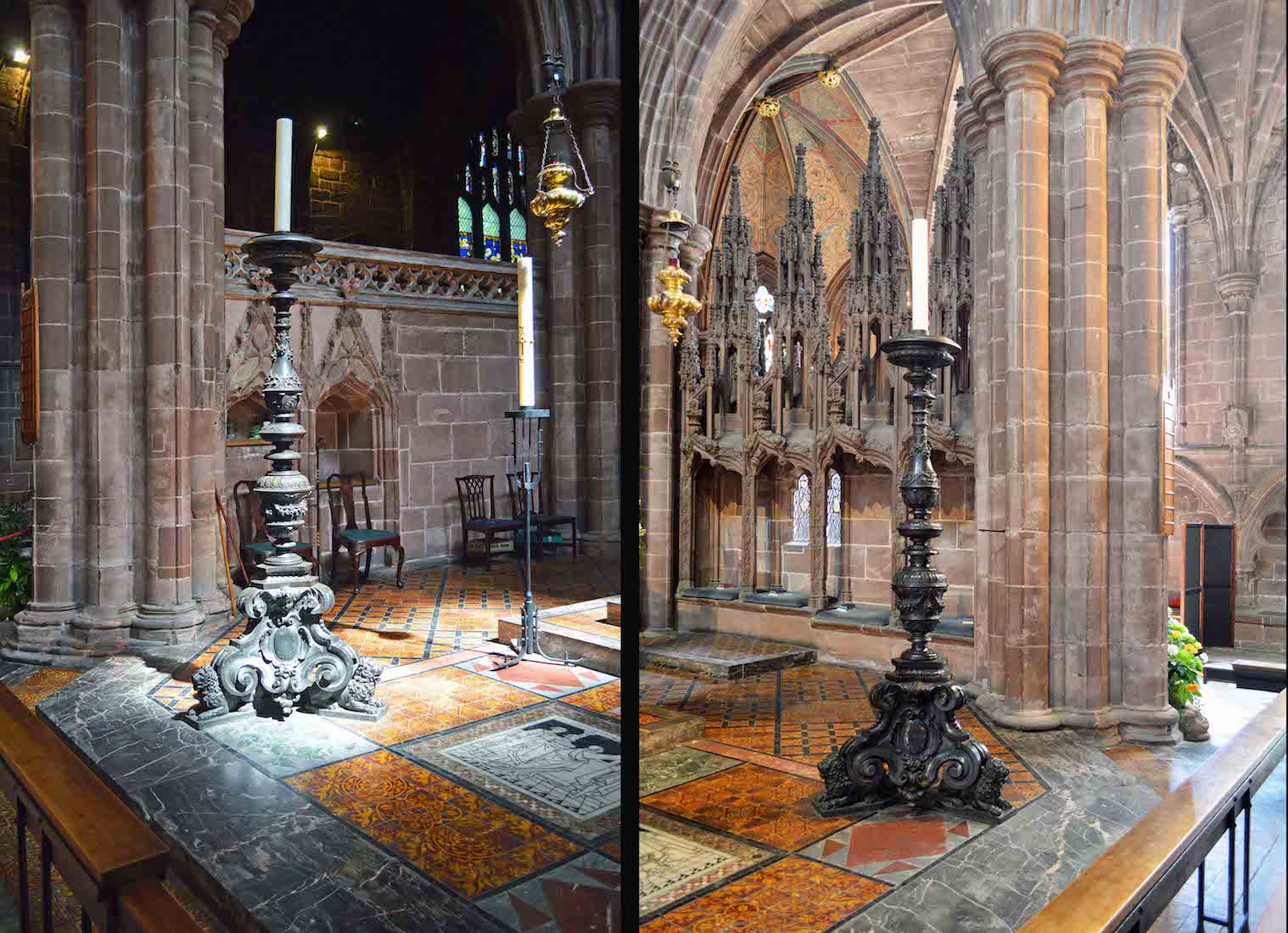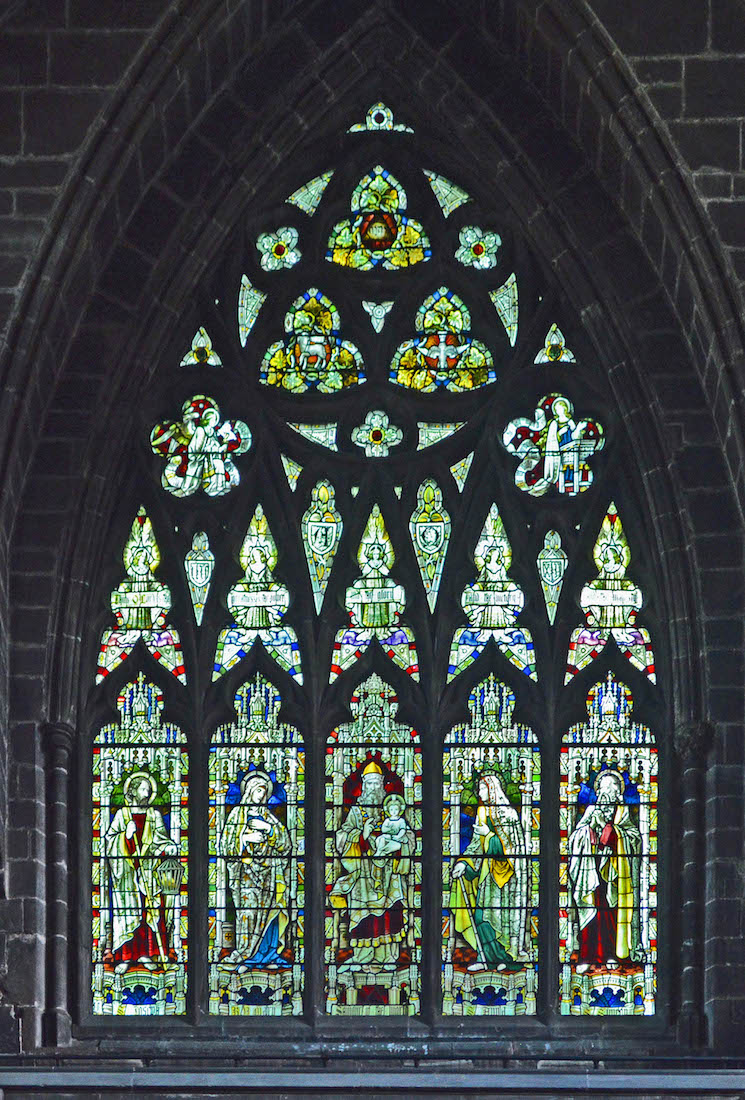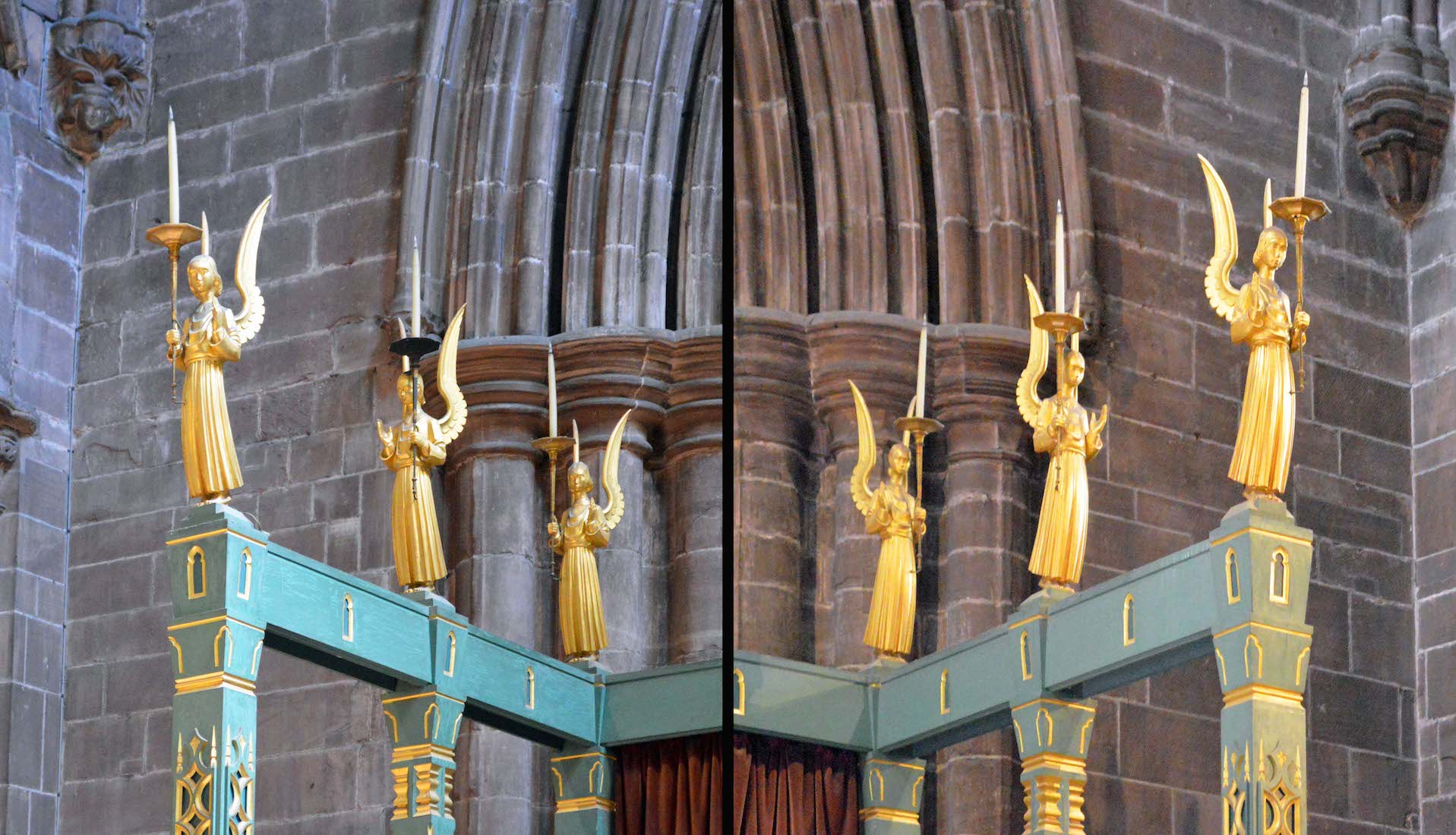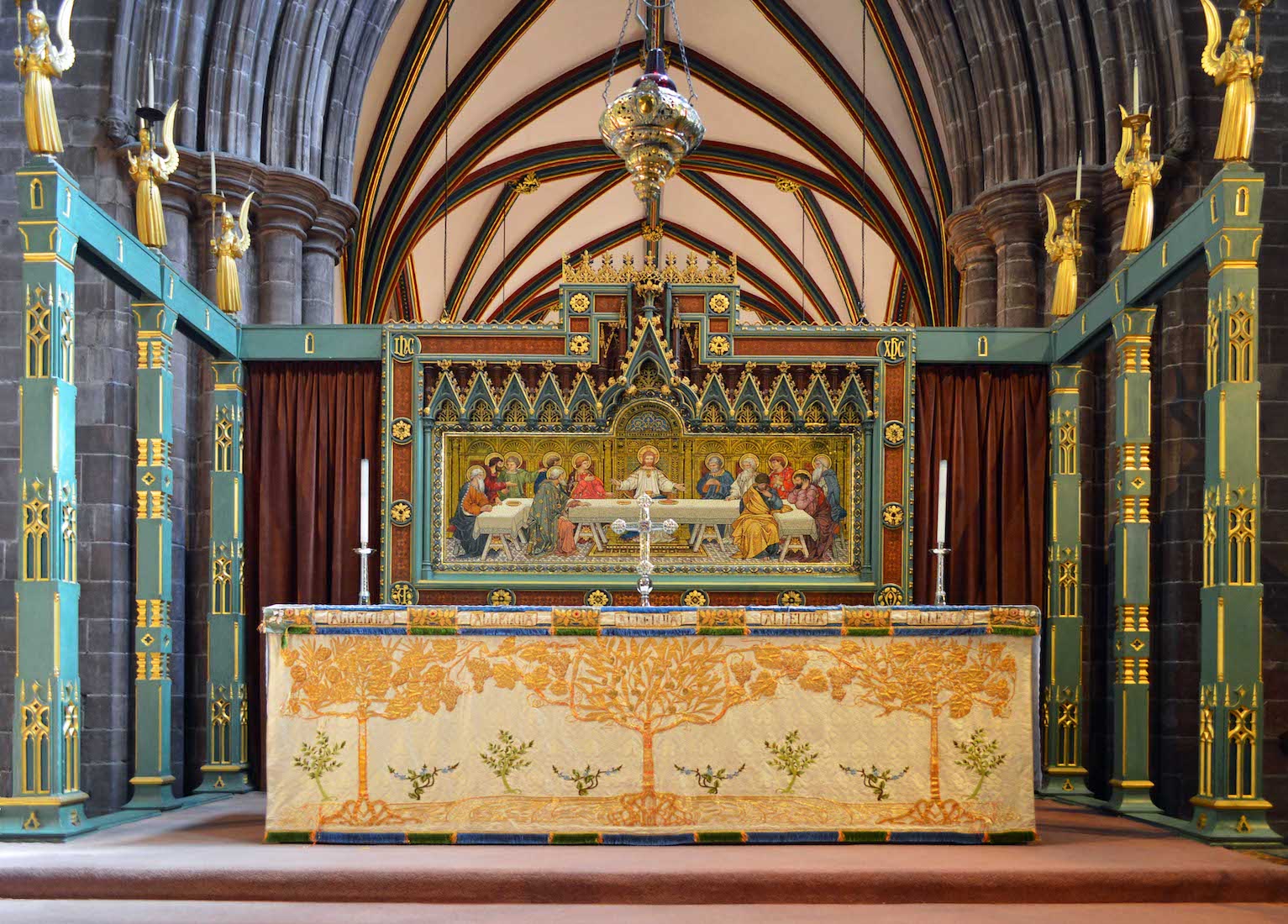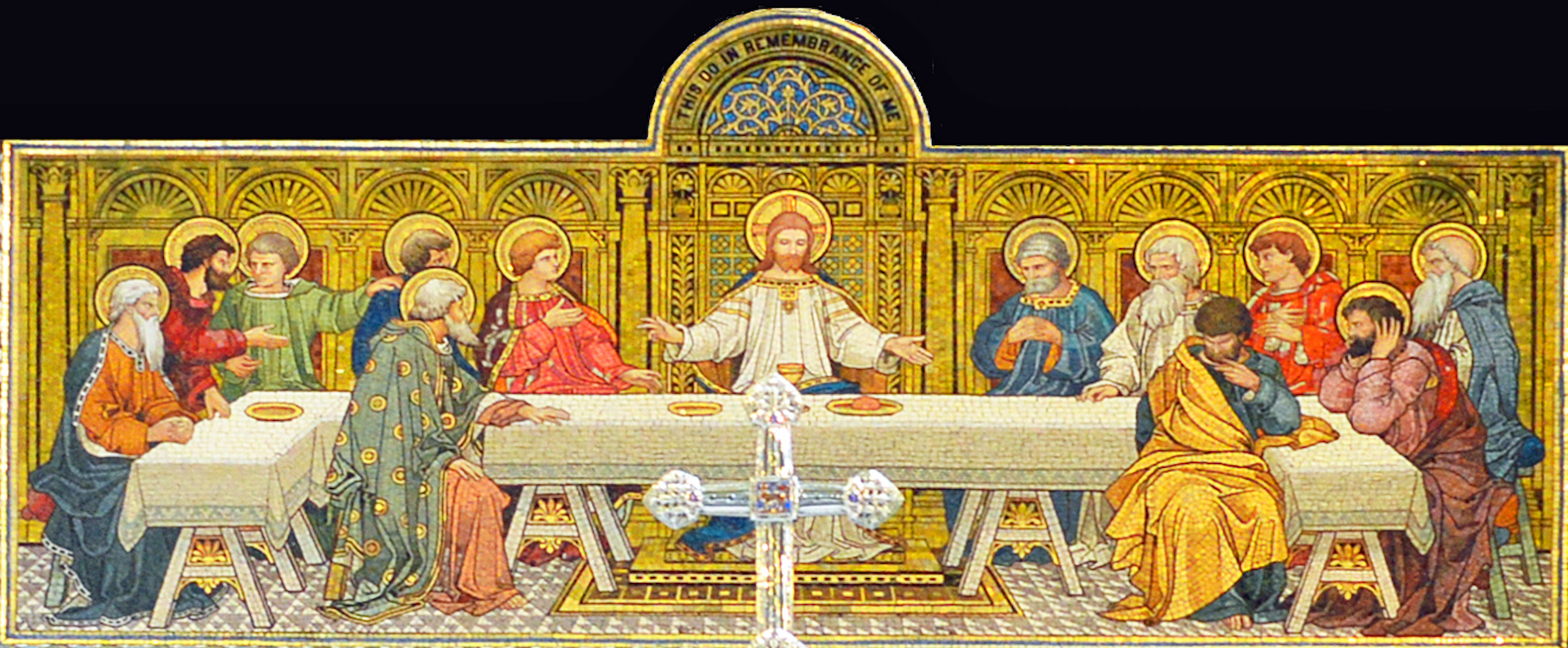101. LEAVING THE SOUTH TRANSEPT
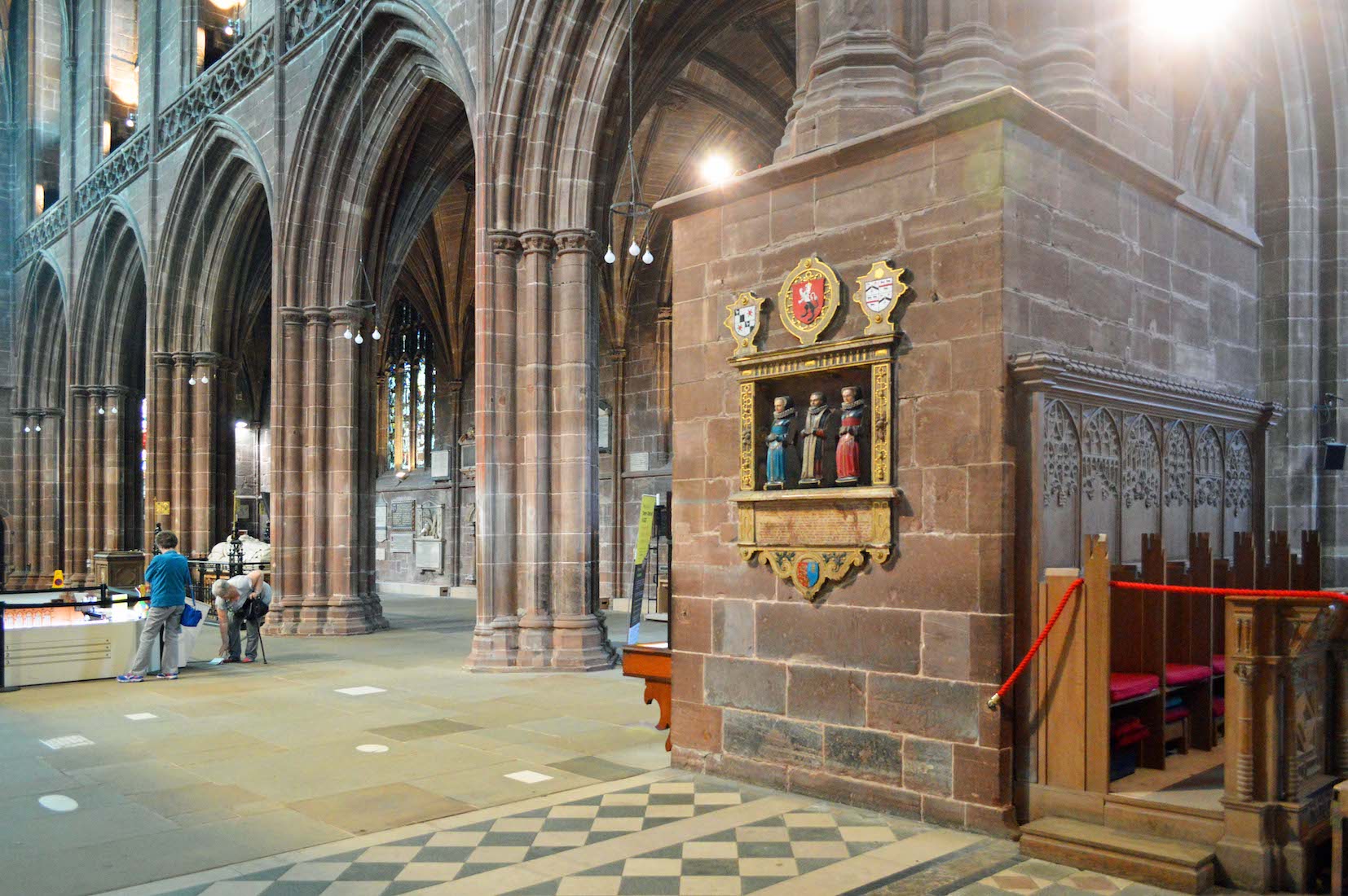
As we leave the South transept, we pass several interesting items at the base of the Southwest column supporting the tower. PLAN
102. HMS CHESTER AND GREENE MEMORIALS
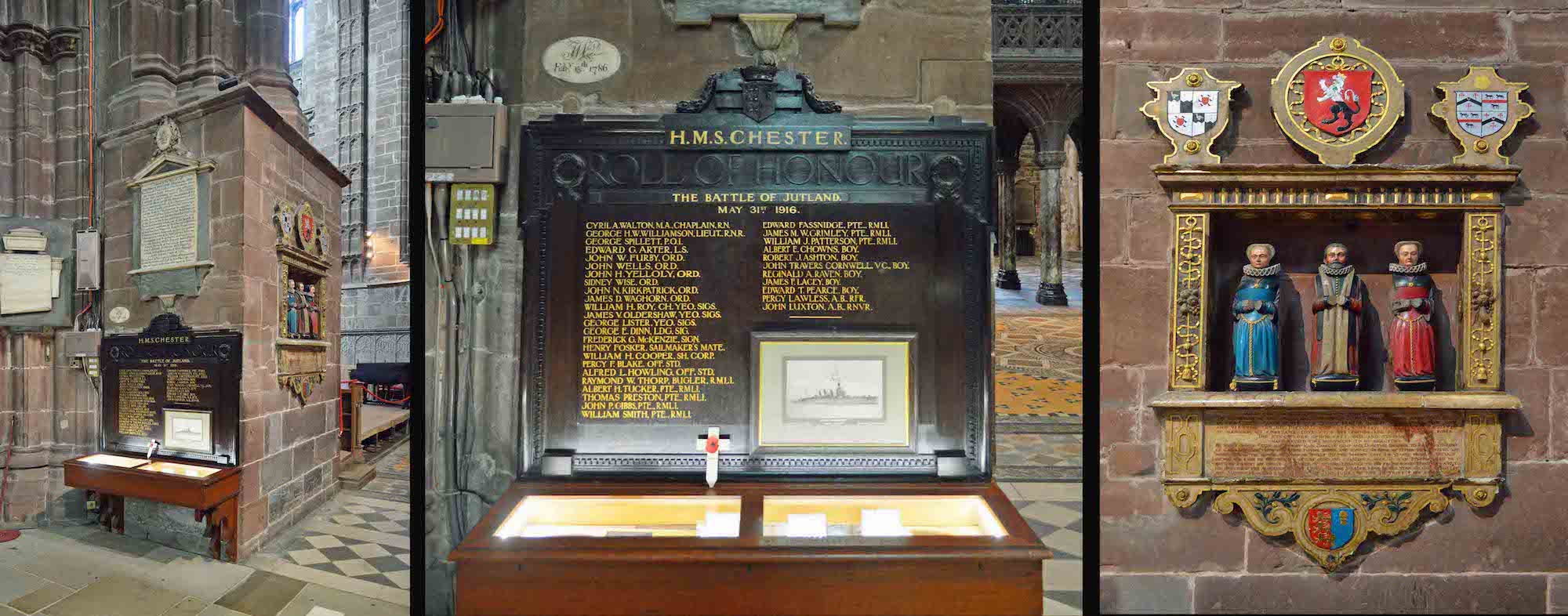
HMS Chester was a light cruiser of the Royal Navy which entered service in May 1916, and fought in the Battle of Jutland where she came under withering fire from German forces, suffering casualties of 29 men killed and 49 wounded. At right is a memorial to Thomas Greene, mayor of Chester in 1565, and his two wives. The hands were chopped off during the English Civil War because they were joined in prayer, regarded at the time as a popish gesture.
104. SCREEN AND QUIRE VAULT
The carved woodwork canopy showing the Crucifixion on the quire screen was designed by Sir Giles Gilbert Scott in 1913, and carved by Ferdinand Stuflesser. The beautifully restored 19th century vault of the choir is typical of the period, having been designed by Scott and decorated and gilded by Clayton and Bell.
105. QUIRE STALLS
The most famous feature of the quire is the set of quire stalls, dating from about 1380. They have high, spiky, closely set canopies, with crocketted arches and spirelets. The stall ends have poppyheads and are rich with figurative carving.
106. QUIRE MISERECORDS
The quire stalls include 48 miserecords, all but five of which are original, depicting a variety of subjects, some humorous and some grotesque. Pevsner states that they are ‘one of the finest sets in the country’.
107. TOWARDS THE SANCTUARY
We make our way past the Quire stalls towards the sancctuary, remembering that the Lady Chapel extends beyond. In particular we notice here the wooden lectern, the fine floor tilings, and the stained glass window high above.
108. LECTERN AND TILING
The lectern, in the form of a wooden eagle, symbol of John the Evangelist, dates from the first half of the 17th century. The delightful floor mosaic dates from 1876, and was designed by J. R. Clayton.
109. CANDLESTICKS
A candlestick stands on either side of the high altar. These date from the 17th century and are by Censore of Bologna who died in 1662. They are supported by lion feet. Also visible here is the Paschal candle, symbolising Christ as the Light of the world, and having special significance over the Easter period.
110. SANCTUARY EAST WINDOW
This window has tracery of an elegant Decorated Gothic design which is filled with stained glass of 1884 by Heaton, Butler and Bayne. There are five figures depicted: from left, St Josiah(?), the Virgin Mary, the Saviour of the world, St Anna, and St Simeon.
111. SANCTUARY ANGELS
The sanctuary is watched over by six golden angels, each bearing a candlestick.
112. HIGH ALTAR
The high altar is the focus of the sanctuary. It is a wide altar with a grand altar cloth, and bears two candlesticks and a central cross. Behind, as a reredos, is a Salviati mosaic of The Last Supper from 1876 designed by J.R. Clayton and installed by Antonio Salviati.
113. THE LAST SUPPER
Towards the end of his earthly life, Jesus calls the disciple to share with him in a special meal. Here in the Cathedral sanctuary, this mosaic is a call to share in the life and mission of Christ. This concludes our tour of Chester Cathedral.
CONCLUSION
I hope you have enjoyed visiting the Chester Cathedral. I enjoyed my visit in spite of the immense number of windows requiring photographing!
I am happy to receive constructive comments or corrections concerning this website. The best websites are the ones which have no errors! I am grateful to my wife Margie who came with me, and who has proof-read these pages. There are some gaps in the text where I failed to identify scenes in some of the windows. I would be delighted to have these gaps filled.
Almost all the photos are mine. However as usual the text is drawn from a large number of sources – in particular:
https://en.wikipedia.org/wiki/Chester_Cathedral
http://chester.shoutwiki.com/wiki/Cathedral
http://archive.org/stream/PictorialHistoryOfChesterCathedral/Complete_djvu.txt
The link for the Cathedral website is:
The photographs which appear on this site can also be found in higher resolution at:
https://www.flickr.com/photos/paulscottinfo/sets/
Paul Scott Site created 07 / 2017 Reformatted 03 / 2020
